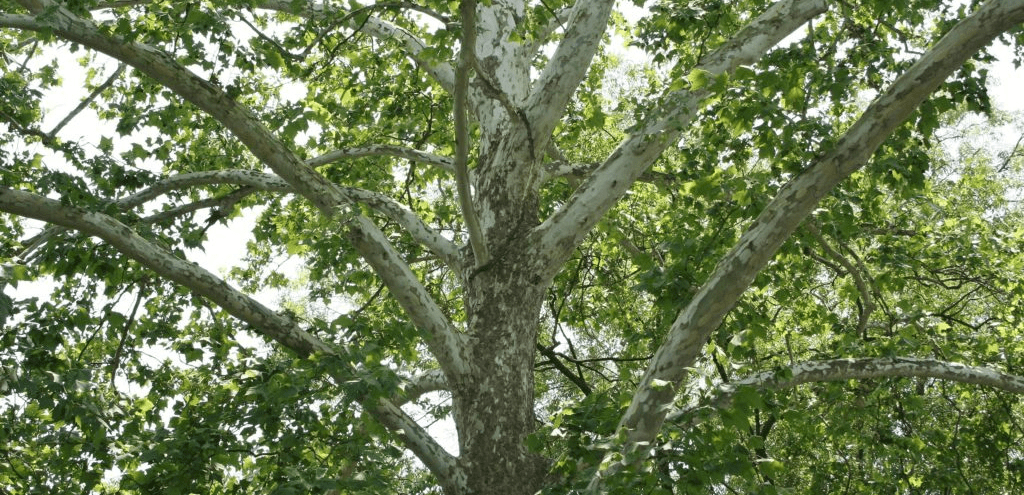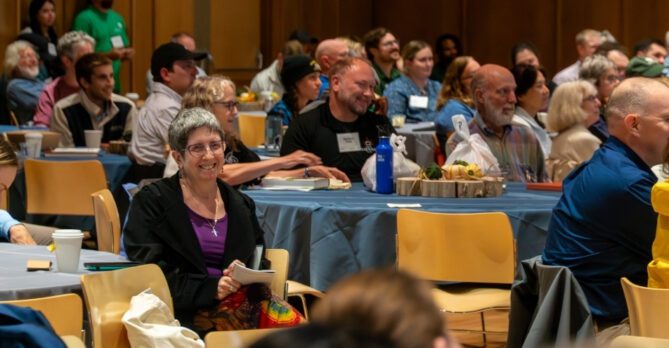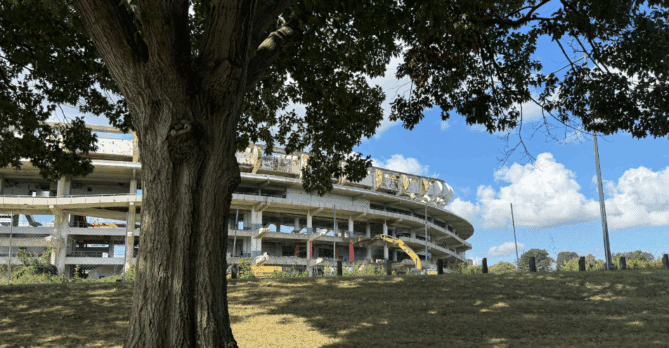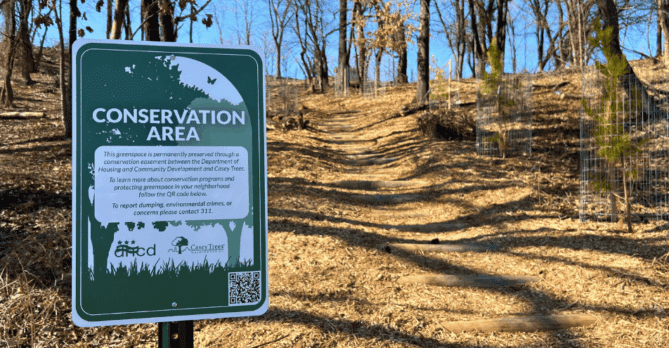
Some deciduous trees have a distinctive appearance in the winter, even without their leaves. The American sycamore (Platanus occidentalis) is one of these trees. Several trees are commonly called sycamores, but the native American sycamore (also known as the American plane tree, occidental plane tree or buttonwood) is a prominent tree in the forests and waterways of the eastern United States.
The sycamore stands out with its interesting bark, which separates into scaly plates that create a multicolored, mottled texture. The bark peels off, uncovering new white, brown, gray, and green layers underneath. All trees with bark go through a process similar to this, but the sycamore shows off its transformation as it grows. Another interesting feature of the tree in the winter is its large round fruit which hang on long stalks. While these fruits are prominent throughout winter, they break up and disperse their seeds in the spring.
The sycamore’s twigs branch out in a zigzag formation, with buds formed at each angle. Its broad palmate leaves have three or five pointed lobes with teeth lining the margins. The tree can be found in river and stream areas, particularly along the Anacostia and Potomac Rivers and the C&O Canal. This tree is available through our residential planting program, RiverSmart Homes. You can also get up to $100 back for planting this tree yourself through our tree rebate program.
Fun facts about the American sycamore:
- A close relative, the London planetree is more commonly found as a street tree in DC because it is more resistant to soil compaction and pollution. The London plane (Platanus x acerifolia) is a cross of the oriental plane and the American sycamore.
- Although it doesn’t often have the chance to do so in a dense city, the sycamore can grow to be quite massive — more than 100 feet tall and very wide. Over in Montgomery County, there’s one American Sycamore measuring in at 137-feet tall with a circumference of 310 inches or 25 feet and crown spread of 108 feet. The tree can be found in Dickerson Conservation Park and was recorded in the 2013 Register of Champion Trees.
- The American sycamore is a tough, wide-canopied tree that will provide plenty of shade in the summer. Its signature brown bark exfoliates to reveal creamy whiter inner bark that can be seen from a great distance. Typically growing to its largest size along rivers and streams, this tree is highly resistant to pollution, salty soils and other urban stressors.


